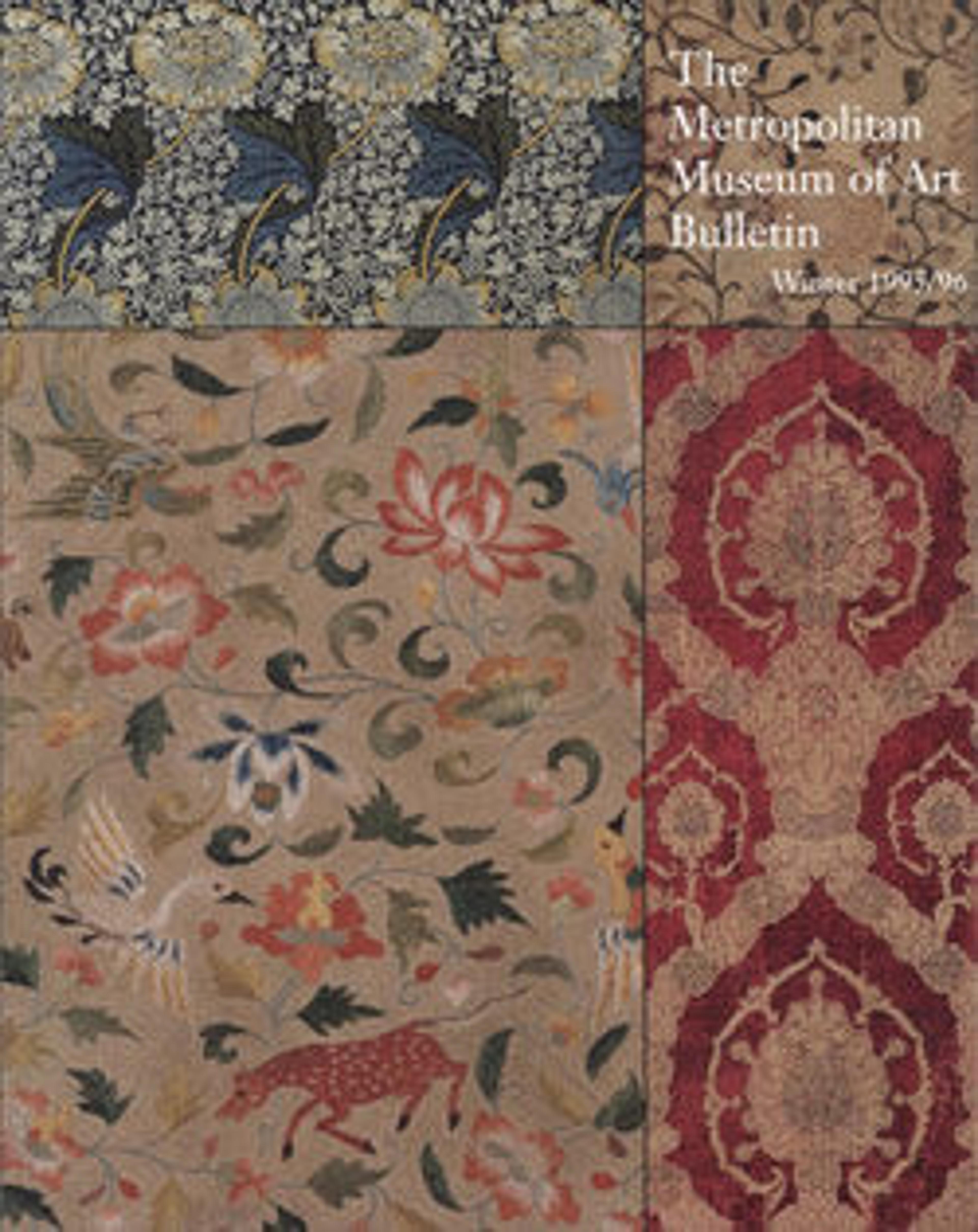Hunting and fishing scenes
This furnishing fabric shows fashionably dressed ladies and gentlemen leisurely pursuing the pastimes of hunting and fishing; it represents, both aesthetically and technically, the height of English textile printing in the eighteenth century. By 1761 Robert Jones had established his manufactory at Old Ford in the East End of London and had mastered the secret of colorfast copperplate printing on textiles, a process invented nine years earlier by Francis Nixon of Drumcondra, Ireland. The new technique allowed for much larger repeats and finer modeling of forms than could be achieved with traditional wood-block printing. This compensated for the fact that the complexity of the design and the restrictions of copperplate printing required that only one color be used.
In this tour de force Jones combined the best aspects of both processes and used each to full advantage. The vertical repeat of the pattern is exceptionally long, slightly more than eighty-one inches, and necessitated two separate copperplates. The principal elements of the design were first plate printed in aubergine. Additional colors were subsequently added by wood-block printing—a technique involving great skill and time to ensure that all impressions register properly—and penciling. It is not surprising, therefore, that only two other examples of this particular composition exist in public collections (Victoria and Albert Museum, London; Musée des Arts Décoratifs, Paris).
Although the designer of these scenes has not been identified, such stylishly adorned gentry sporting in a landscape replete with architectural ruins and towering trees frequently appear in contemporary English paintings and prints.
In this tour de force Jones combined the best aspects of both processes and used each to full advantage. The vertical repeat of the pattern is exceptionally long, slightly more than eighty-one inches, and necessitated two separate copperplates. The principal elements of the design were first plate printed in aubergine. Additional colors were subsequently added by wood-block printing—a technique involving great skill and time to ensure that all impressions register properly—and penciling. It is not surprising, therefore, that only two other examples of this particular composition exist in public collections (Victoria and Albert Museum, London; Musée des Arts Décoratifs, Paris).
Although the designer of these scenes has not been identified, such stylishly adorned gentry sporting in a landscape replete with architectural ruins and towering trees frequently appear in contemporary English paintings and prints.
Artwork Details
- Title: Hunting and fishing scenes
- Manufactory: Manufactured by Robert Jones
- Date: 1769
- Culture: British
- Medium: Linen and cotton
- Dimensions: W. 39 in. (99.1 cm), L. 81 1/8 in. (206.1 cm)
- Classification: Textiles-Printed
- Credit Line: Rogers Fund, 1983
- Object Number: 1983.365
- Curatorial Department: European Sculpture and Decorative Arts
More Artwork
Research Resources
The Met provides unparalleled resources for research and welcomes an international community of students and scholars. The Met's Open Access API is where creators and researchers can connect to the The Met collection. Open Access data and public domain images are available for unrestricted commercial and noncommercial use without permission or fee.
To request images under copyright and other restrictions, please use this Image Request form.
Feedback
We continue to research and examine historical and cultural context for objects in The Met collection. If you have comments or questions about this object record, please contact us using the form below. The Museum looks forward to receiving your comments.
